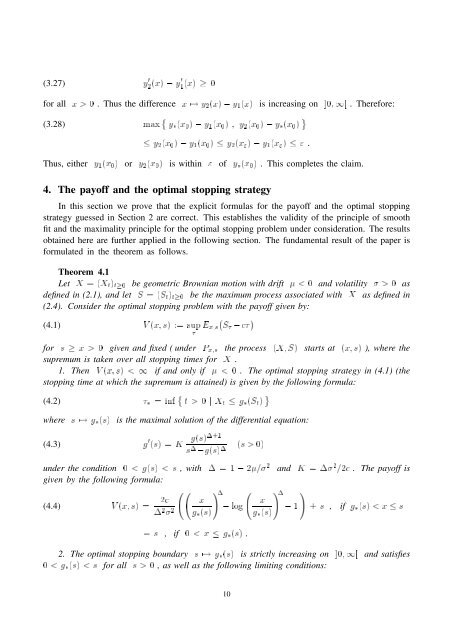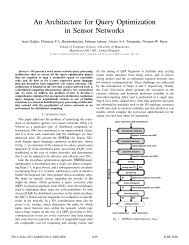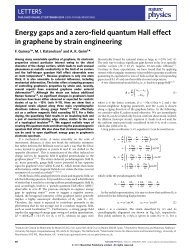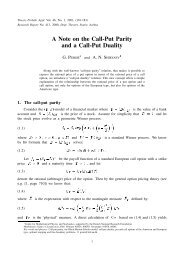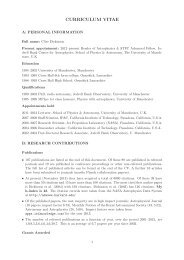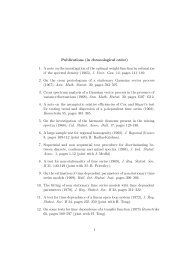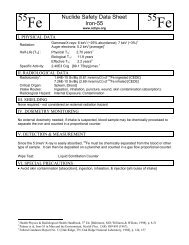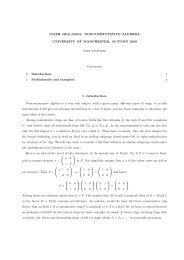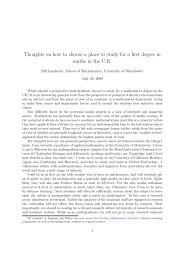inequality for geometric Brownian motion
inequality for geometric Brownian motion
inequality for geometric Brownian motion
You also want an ePaper? Increase the reach of your titles
YUMPU automatically turns print PDFs into web optimized ePapers that Google loves.
(3.27) y 0 2(x) 0 y 0 1(x) 0<strong>for</strong> all x > 0 . Thus the difference x 7! y 2 (x) 0 y 1 (x) is increasing on ]0;1[ . There<strong>for</strong>e:(3.28) max8)9y 3(x 0 ) 0 y 1 (x 0 ) ; y 2 (x 0 ) 0 y3(x 0 y 2 (x 0 ) 0 y 1 (x 0 ) y 2 (x " ) 0 y 1 (x " ) " .Thus, either y 1 (x 0 ) or y 2 (x 0 ) is within " of y3(x 0 ) . This completes the claim.4. The payoff and the optimal stopping strategyIn this section we prove that the explicit <strong>for</strong>mulas <strong>for</strong> the payoff and the optimal stoppingstrategy guessed in Section 2 are correct. This establishes the validity of the principle of smoothfit and the maximality principle <strong>for</strong> the optimal stopping problem under consideration. The resultsobtained here are further applied in the following section. The fundamental result of the paper is<strong>for</strong>mulated in the theorem as follows.Theorem 4.1Let X = (X t ) t0 be <strong>geometric</strong> <strong>Brownian</strong> <strong>motion</strong> with drift < 0 and volatility > 0 asdefined in (2.1), and let S = (S t ) t0 be the maximum process associated with X as defined in(2.4). Consider the optimal stopping problem with the payoff given by:(4.1) V (x; s) := sup Ex;s0S 0c1<strong>for</strong> s x > 0 given and fixed ( under P x;sthe process (X; S) starts at (x; s) ), where thesupremum is taken over all stopping times <strong>for</strong> X .1. Then V (x; s) < 1 if and only if < 0 . The optimal stopping strategy in (4.1) (thestopping time at which the supremum is attained) is given by the following <strong>for</strong>mula:(4.2) 3 = inf8t > 0 j X t g3(S t )9where s 7! g3(s) is the maximal solution of the differential equation:(4.3) g 0 (s) = K g(s)1+1s 1 (s > 0)0g(s) 1under the condition 0 < g(s) < s , with 1 = 1 0 2= 2given by the following <strong>for</strong>mula:(4.4) V (x; s) = 2c1 2 2 xg3(s)!10 logxg3(s)= s , if 0 < x g3(s) .and K = 1 2 =2c . The payoff is!10 1!+ s , if g3(s) < x s2. The optimal stopping boundary s 7! g3(s) is strictly increasing on ]0;1[ and satisfies0 < g3(s) < s <strong>for</strong> all s > 0 , as well as the following limiting conditions:10


